1. Thompson AC, Olcott EW, Poullos PD, Jeffrey RB, Thompson MO, Rosenberg J, et al. Predictors of appendicitis on computed tomography among cases with borderline appendix size. Emerg Radiol. 2015; 22:385–394. PMID:
25687166.
2. Fujishiro J, Watanabe E, Hirahara N, Terui K, Tomita H, Ishimaru T, et al. Laparoscopic versus open appendectomy for acute appendicitis in children: a nationwide retrospective study on postoperative outcomes. J Gastrointest Surg. 2021; 25:1036–1044. PMID:
32128682.
3. Kosloske AM, Love CL, Rohrer JE, Goldthorn JF, Lacey SR. The diagnosis of appendicitis in children: outcomes of a strategy based on pediatric surgical evaluation. Pediatrics. 2004; 113(1 Pt 1):29–34. PMID:
14702443.
4. Luo CC, Chien WK, Huang CS, Lo HC, Wu SM, Huang HC, et al. Trends in diagnostic approaches for pediatric appendicitis: nationwide population-based study. BMC Pediatr. 2017; 17:188. PMID:
29100501.
5. Ramarajan N, Krishnamoorthi R, Gharahbaghian L, Pirrotta E, Barth RA, Wang NE. Clinical correlation needed: what do emergency physicians do after an equivocal ultrasound for pediatric acute appendicitis? J Clin Ultrasound. 2014; 42:385–394. PMID:
24700515.
6. Nance ML, Adamson WT, Hedrick HL. Appendicitis in the young child: a continuing diagnostic challenge. Pediatr Emerg Care. 2000; 16:160–162. PMID:
10888451.
7. Benabbas R, Hanna M, Shah J, Sinert R. Diagnostic accuracy of history, physical examination, laboratory tests, and point-of-care ultrasound for pediatric acute appendicitis in the emergency department: a systematic review and meta-analysis. Acad Emerg Med. 2017; 24:523–551. PMID:
28214369.
8. Jaremko JL, Crockett A, Rucker D, Magnus KG. Incidence and significance of inconclusive results in ultrasound for appendicitis in children and teenagers. Can Assoc Radiol J. 2011; 62:197–202. PMID:
20493658.
9. Debnath J, Kumar R, Mathur A, Sharma P, Kumar N, Shridhar N, et al. On the role of ultrasonography and CT scan in the diagnosis of acute appendicitis. Indian J Surg. 2015; 77(Suppl 2):221–226. PMID:
26729997.
10. Partain KN, Patel A, Travers C, McCracken CE, Loewen J, Braithwaite K, et al. Secondary signs may improve the diagnostic accuracy of equivocal ultrasounds for suspected appendicitis in children. J Pediatr Surg. 2016; 51:1655–1660. PMID:
27039121.
11. Yi DY, Lee KH, Park SB, Kim JT, Lee NM, Kim H, et al. Accuracy of low dose CT in the diagnosis of appendicitis in childhood and comparison with USG and standard dose CT. J Pediatr (Rio J). 2017; 93:625–631. PMID:
28445687.
12. Yoon HM, Suh CH, Cho YA, Kim JR, Lee JS, Jung AY, et al. The diagnostic performance of reduced-dose CT for suspected appendicitis in paediatric and adult patients: a systematic review and diagnostic meta-analysis. Eur Radiol. 2018; 28:2537–2548. PMID:
29327290.
13. Sim JY, Kim HJ, Yeon JW, Suh BS, Kim KH, Ha YR, et al. Added value of ultrasound re-evaluation for patients with equivocal CT findings of acute appendicitis: a preliminary study. Eur Radiol. 2013; 23:1882–1890. PMID:
23392792.
14. Jang KM, Lee K, Kim MJ, Yoon HS, Jeon EY, Koh SH, et al. What is the complementary role of ultrasound evaluation in the diagnosis of acute appendicitis after CT? Eur J Radiol. 2010; 74:71–76. PMID:
19144480.
15. Cavuşoğlu YH, Erdoğan D, Karaman A, Aslan MK, Karaman I, Tütün OC. Do not rush into operating and just observe actively if you are not sure about the diagnosis of appendicitis. Pediatr Surg Int. 2009; 25:277–282. PMID:
19184052.
16. Kim K, Kim YH, Kim SY, Kim S, Lee YJ, Kim KP, et al. Low-dose abdominal CT for evaluating suspected appendicitis. N Engl J Med. 2012; 366:1596–1605. PMID:
22533576.
17. Taylor GA, Callahan MJ, Rodriguez D, Smink DS. CT for suspected appendicitis in children: an analysis of diagnostic errors. Pediatr Radiol. 2006; 36:331–337. PMID:
16463152.
18. Song B, Moon SB, Chae G, Park SB, Hong SK, Kim YH, et al. CT findings that indicate pediatric appendicitis: lessons from negative appendectomies. Adv Pediatr Surg. 2021; 27:15–21.
19. Keating EM, Orth RC, Bisset GS, Starke HE, Cruz AT. Utility of computed tomography overreading and abdominal ultrasound in children with suspected appendicitis and nondiagnostic computed tomography at community hospitals. Pediatr Emerg Care. 2020; 36:564–570. PMID:
33136834.
20. Kim M, Kim SJ, Cho HJ. Effect of surgical timing and outcomes for appendicitis severity. Ann Surg Treat Res. 2016; 91:85–89. PMID:
27478814.
21. Podda M, Cillara N, Di Saverio S, Lai A, Feroci F, Luridiana G, et al. Antibiotics-first strategy for uncomplicated acute appendicitis in adults is associated with increased rates of peritonitis at surgery: a systematic review with meta-analysis of randomized controlled trials comparing appendectomy and non-operative management with antibiotics. Surgeon. 2017; 15:303–314. PMID:
28284517.
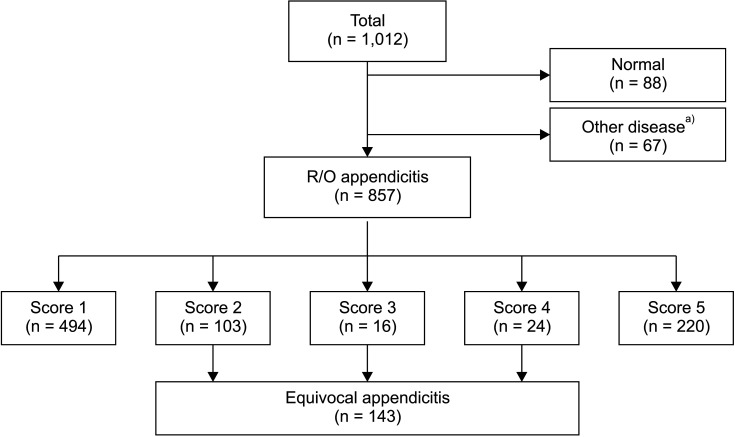
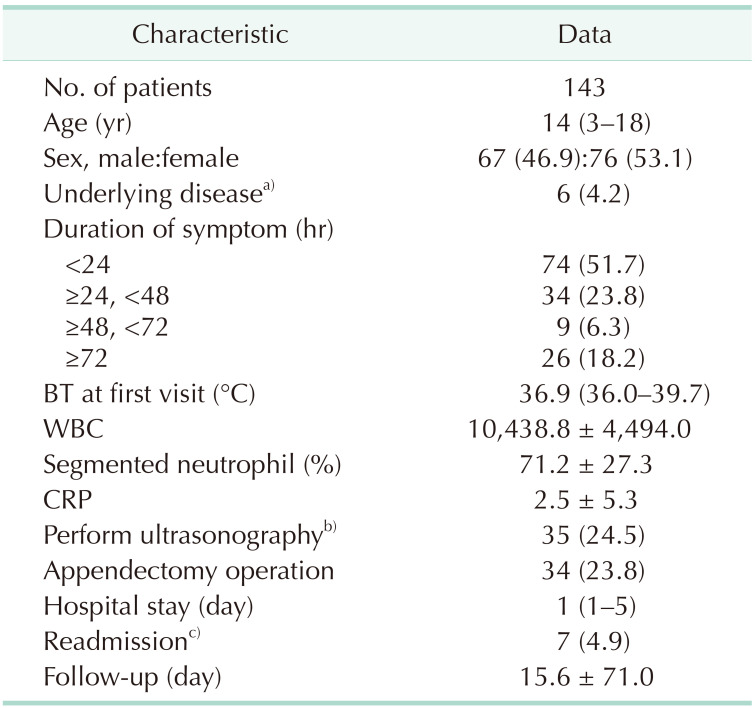
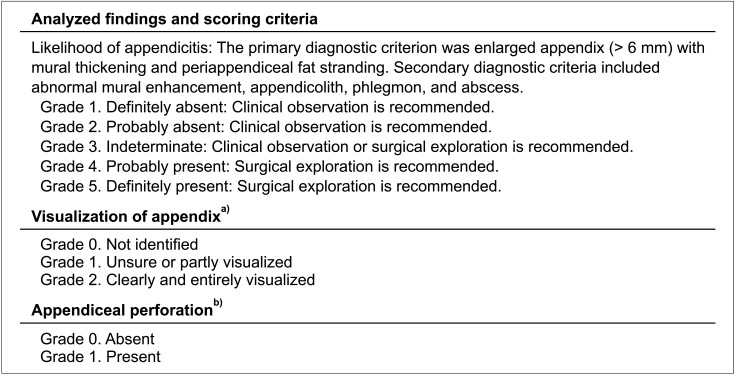




 PDF
PDF Citation
Citation Print
Print




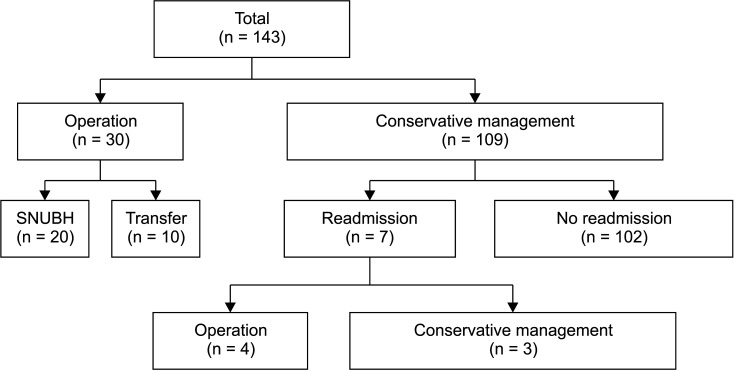
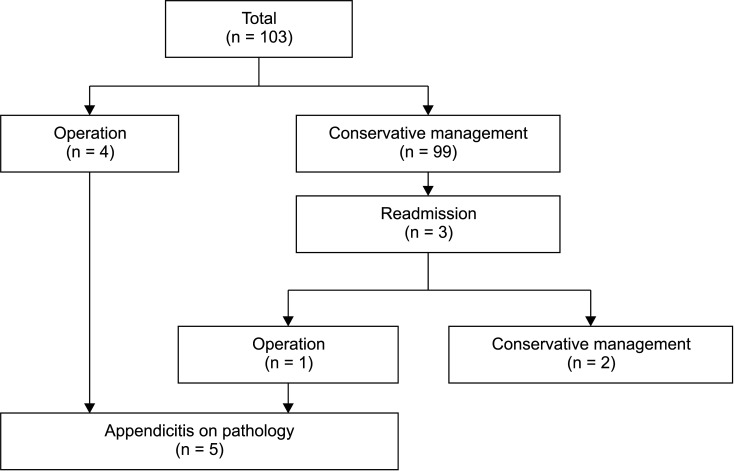

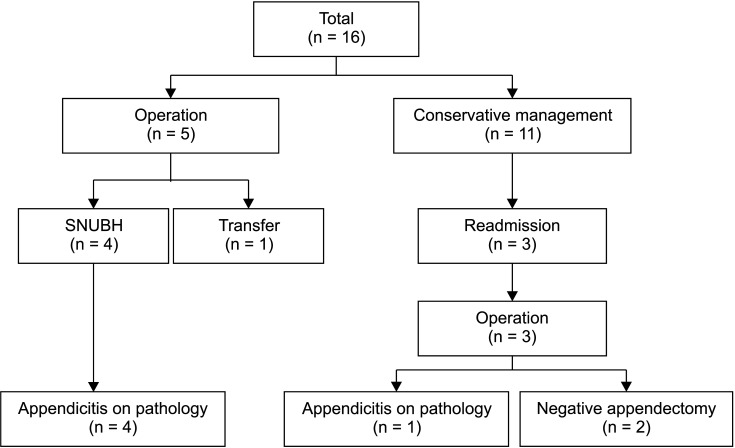
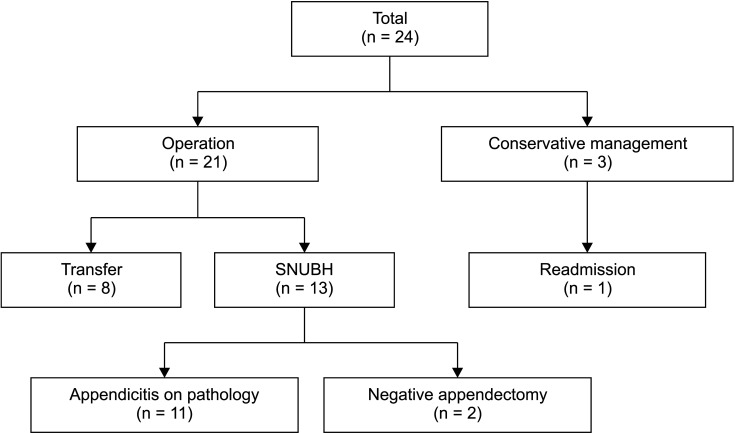
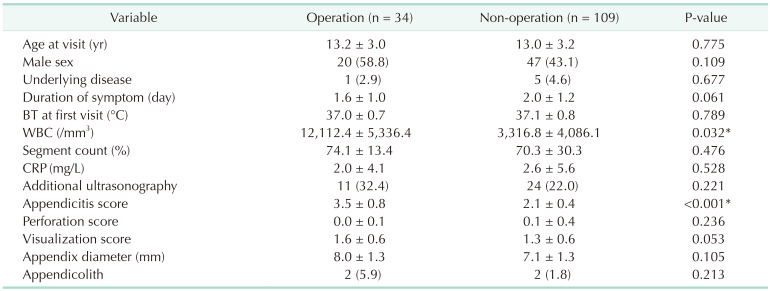
 XML Download
XML Download